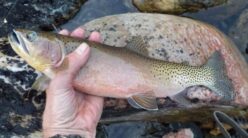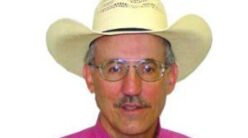For the past few weeks, I have been reading everything I could find on big game migration in the Western mountain states, primarily Idaho, Montana and Wyoming. There is a lot of information on this topic available to those who are interested in wading through it all.
I decided to limit this column to what I learned from two articles: one by Arthur Middleton, associate professor of wildlife ecology, management and policy at the University of California, Berkeley, in an article for the New York Times and one by Bryan Brooks, executive director of The Idaho Wildlife Federation, in an article for the Idaho Statesman.
Secretary of the Interior Ryan Zinke recently signed an order for agencies in his department to identify and conserve migratory routes and crucial winter habitat for deer, elk and pronghorn. Specifically, he ordered those agencies to work with states and private landowners to improve habitat and minimize development and disturbance in migration corridors and winter ranges used by elk, deer and pronghorn antelope.
Since wildlife researchers started tracking game species with radio collars and GPS devices, the extent of big game migration routes has been realized, particularly in and around Yellowstone National Park.
These migration routes are the traditional routes that big game animals have followed for generations and are the lifeblood of many Western landscapes. They sustain apex predators such as eagles, foxes, wolves, grizzly bears and mountain lions.
These migration routes cross what is now a complicated mess of jurisdictional boundaries.
Collaboration between federal as well as state agencies and private landowners is crucial for big game populations and subsequently big game hunting opportunities. It would be good news for all three states wildlife populations who are facing increasingly difficult challenges during seasonal migration and on low elevation wintering grounds.
For example, the Donkey Hills in the Lost River Range in Idaho contain some of Idaho’s most important elk calving habitat. Big game animals rely on this territory before migrating to higher elevations.
However, Zinke’s Department of the Interior doesn’t control all the land that the migration routes cross, making voluntary cooperation among the different agencies and landowners that control the land a crucial element in the success of protecting the migration routes.
Zinke certainly has a challenging job trying to get landowners to protect the migration routes that cross their land as well as getting multiple federal and state agencies to work together to protect the traditional big game migration routes. I, for one, wish him success.
Smokey Merkley was raised in Idaho and has been hunting since he was 10 years old. He can be contacted at mokeydo41245@hotmail.com.



